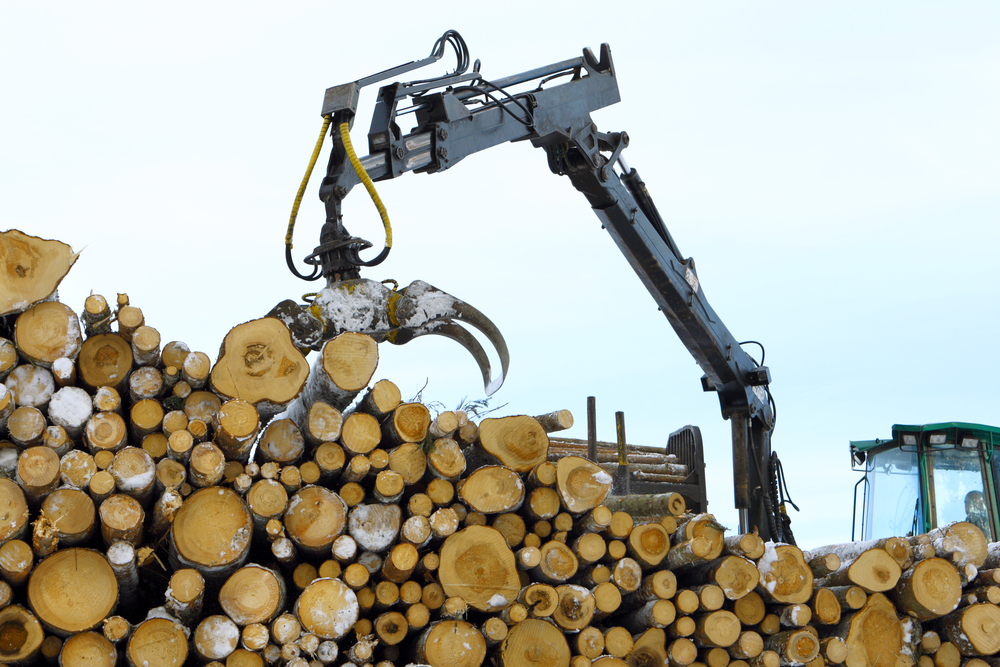A shortfall of approximately 120,000t of logs per annum has been caused by the Department of Agriculture, Food and the Marine’s (DAFM) inability to process forestry felling licences and is costing farmers almost €1 million per month in lost revenues.
That’s according to Ibec’s Forest Industries Ireland (FII) which said that farmers can’t get their trees harvested and sold.
According to FII, farmers also can’t plant new woodlands because of up to two years delay in afforestation licencing.
In a statement, the body said: “The forest sector is rapidly losing people because of the government’s inability to deliver licences.
“Farmers are losing millions of euro in lost timber revenues – they can’t harvest when they want to. The single biggest blockage in getting farmers to plant trees is the delay with licences – there is too much uncertainty and bureaucracy for them.
“Add on top of this the impact on our carbon budgets and Climate Action Plan. Our Climate Action Plan is completely undermined if we don’t see a huge increase in new planting,” the statement continued.
Importance of forestry for carbon capture
FII added that every year, Ireland is missing out on millions of tonnes of carbon sequestration.
The industry body said that every hectare of new forest, and the timber it will produce, would offset 150t of carbon dioxide (CO2) during its lifetime. In other words, every 1,000ha not planyed is 150,000t of CO2 still in the atmosphere.
According to FII, this year we will plant 2,300ha, while we need 15,000ha of new forests each year to get to net zero by 2050.
“There is a yawning gap between the government’s ambition for tree planting and what it is delivering,” FII said.
“The scientific fact is that our forests store over 300 million tonnes of carbon and currently absorb millions more tonnes of carbon dioxide every year.
“That alone is offsetting the emissions from 70% of our cars, and it is why the whole world is calling for the planting of more trees in the fight against the climate change.”
According to FII, the licencing crisis continues with around 5,000 applications still in the backlog today. More applications are expected to go into the system this year than licences will come out.
FII claims that the afforestation sector is on its knees and Irish farmers’ confidence in forestry is completely undermined.
Planting conifers
Director of Ibec’s Forest Industries Ireland (FII), Mark McAuleY said: “Here in Ireland, we are being sidetracked by a tangential debate about planting ‘too many’ conifers. It’s a strange state of affairs because conifers make sense.
“Conifers give the world the timber it needs to build sustainable buildings. Conifers grow quickly and absorb CO2 fast. You can make a living from conifers – they are the raw material for sustainable jobs, products and incomes.
“So, if we want to grow our national forest cover and really fight climate change, we have a good chance of doing that with modern productive forests, because it makes economic sense for farmers to plant these. That’s the crux,” he added.
“Farmers are at the heart of this. You can strive for the planting of more oak and beech and native woodlands, but most farmers can’t afford to do that.
“What they need is a return from their land. If you want forestry to scale up to combat climate change then we need a species mix with plenty of conifers because that’s how we’ll really increase our forest cover.”
Native forestry
While FII outlines what it said is the necessity of planning conifers, it added that it does not mean that there should not be a strong ambition to plant more native woodland in Ireland.
“We absolutely should promote and finance that activity at the same time as planting more productive forests. We should ringfence significant government funding and leverage various financial incentives to make native woodlands economically viable,” McAuley added.
“The other issue that keeps coming up is biodiversity. Nobody will argue that our productive forests are planted specifically for biodiversity but that doesn’t mean they are bad for it. Far from it.
“There is much more biodiversity in the mixed-species forests that we are planting today than in the grassland they most often replace,” he added.
FII said that an annual afforestation programme of 15,000ha would provide plenty of new forests for all purposes and would create a balanced mixture of all kinds of forests across our landscape.
